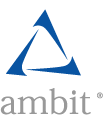Announcing the 2006 Fierce 15

FierceBiotech, April 2006
If you look over the biotech companies on this year’s list, you’ll see a few common attributes: There’s a big emphasis on efficient use of capital; more of these up-and-coming biotechs are striking licensing deals with major pharma partners at an earlier stage than ever; and the valuations they appear to be getting are strong.
If you’ve got good science, there’s never been a better time to be a biotechnology company.
Over the rest of the year, many of these companies will be back in FierceBiotech’s daily newsletter with new licensing deals, a move to go public or, in some cases, news they are being bought out. They’ll be back in the news because the technology that they founded their business on promises to produce real advances for hard-to-treat medical conditions. Some are working with legendary scientists; others are promising to become the legends of the future. No doubt, a few might fail to live up to their early potential. But with the biotechnology industry steadily gaining ground with new medicines, they all have a better chance at making the grade than ever before. We’ll be watching this group closely, of course, as with all of the Fierce 15 alum of the past four years. – John Carroll
Ambit Biosciences
Based: San Diego
Founded: 2000
www.ambitbio.com
Why It’s Fierce: Ambit Biosciences can count on some of the best collaborators in the business. The company has leveraged its KinsomeScan technology for screening kinase inhibitors into deals with Roche, Bristol-Myers Squibb, GlaxoSmithKline and Pfizer, to name a few.
“Small molecule drugs like Gleevec and Iressa work by binding to the kinase’s ATP binding site and preventing ATP from binding; that inactivates the enzyme,” says CEO Scott Salka. “There are 518 human protein kinases in our proteome, all have an ATP binding site.”
The problem with many of the kinase inhibitors, though, is that they tend to be indiscriminate about binding to kinases, making them toxic. So Ambit researchers use their technology to efficiently find those small molecule kinase inhibitors that can disable a specific target. Two years ago, Ambit’s 24 employees could screen 90 kinases in its library. Today, it takes fewer than 10 of its 70 workers to screen a panel of 234.
Ambit has three therapeutic programs in development on its own and plans to develop its own full pipeline over time. The “sweet spot” for Ambit is discovery and early stage development into early Phase II. After that, the drug candidates are likely to be licensed out to others for late-stage development and marketing.
A group of collaborations are already under way, including a key pact with Bristol-Myers Squibb in which Ambit in-licensed a preclinical kinase inhibitor program and gained access to BMS’ chemistry. Combining big developers’ chemistry with Ambit’s screening technology will help accelerate the company’s growth.
Ambit has raised more than $56 million from investors, including Roche Venture Fund, Aisling Capital, Avalon Ventures, GIMV NV, MDS Capital, Genechem and Bristol-Myers Squibb.
What to look for: Ambit plans to initiate clinical trials with its kinase inhibitor for the treatment of Acute Myeloid Leukemia in 2006. Salka says that by the end of this year, its kinase library will expand to more than 300. If all goes well, you can expect to see an IPO in 12 months to 18 months. At the same time, Salka doesn’t rule out a deal to sell Ambit to a bigger biopharma company.
Category: Events
